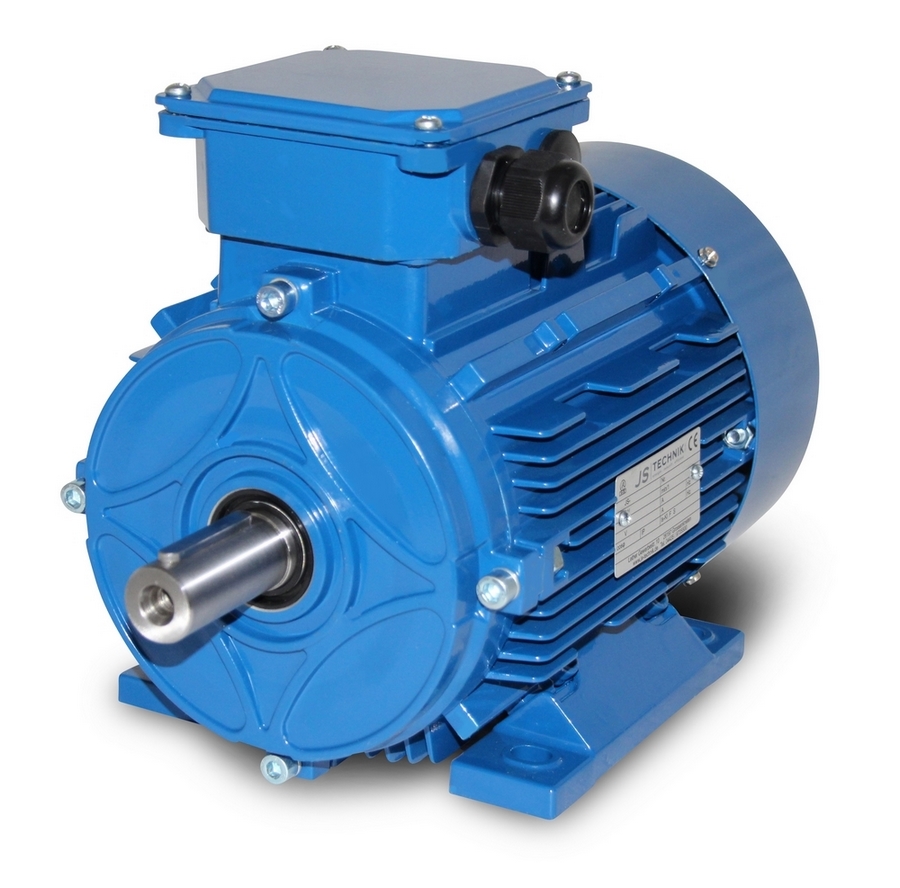1. How does a three-phase motor work?
Three-phase motors are operated with three-phase alternating current or “three-phase current”. This type of current carries its own periodically changing voltage in three separate conductors, the timing of which is offset by 120° ahead or behind the other two conductor voltages. If you feed three electromagnet coils, each with a conductor voltage phase of the three-phase system, then a magnetic field is generated in each coil, the timing of which, like the voltage progression, is offset by a third of a period compared to the other coil fields. If you arrange these three coils in a circle relative to each other, the individual coil magnetic fields result in a summed magnetic field which, although of constant size, continuously changes its direction exactly in accordance with the frequency or period repetition of the three-phase current. This summed magnetic field “rotates” at exactly the speed specified by the frequency. With 50 period changes per second of the three-phase current (or 50 Hz), the magnetic field also rotates around itself 50 times per second (corresponding to 3000 times per minute). If you place a magnetic object on a centrally arranged axis into this rotating magnetic field For example, a bar magnet or a simple iron body, the rotor, also known as the rotor, is also rotated.

